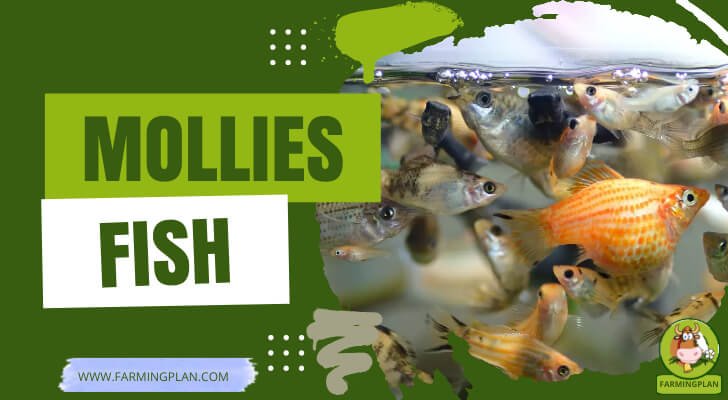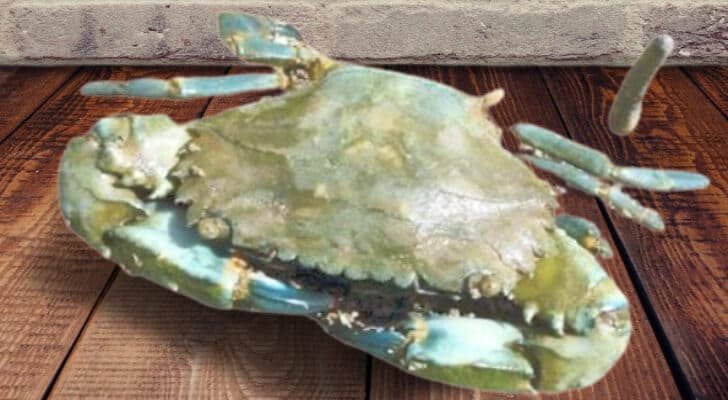The Mollies fish is a genus of fish of the Actinopterygii class belonging to the family Poeciliidae. These fish are very common in aquariums around the world due to their ease of conservation and general care. This genus belongs to a large number of species that have different characteristics. The genus Mollies, as it was originally classified, has some of the most beautiful and exotic varieties of live-bearer fish.
The sailfin molly is arguably one of the most exotic fish available among any genus. However, these are perhaps the hardest to keep when they’re exposed to environmental stress or chilled so they not to develop an ailment known commonly as “shimmies.” In reality, this isn’t a contagious disease but instead just a compounding symptom of being stressed out which means you should be careful with how much time your floaty friends spend outside during cold weather!
The Mollies are freshwater species found in the Southern United States, Central America, and parts of South America. They can survive for short periods under saltwater but live primarily in fresh or brackish environments such as estuaries with low levels of salinity.

Characteristics of Mollies Fish
The males of this species tend to be smaller, but more elongated and their fins have a greater increase than in females. The male has a maximum length of six centimetres, while the female measures 10 centimetres. These characteristics make a marked sexual dimorphism in the species of this mollies fish. They have an algae body, with a slightly pointed head and mouth, where we find very sharp teeth.
Their fins have soft radii. The coloration of the Mollies fish is very diverse, the fruit of the different crosses made by the aquarists. In a natural state, this fish is black and speckled in yellow, however, for sale, we find Mollies black, orange, marbled, white, red, gold, Dalmatian, and albino. The quantity is wide and from time to time, we are surprised by a new Mollies fish hybrid. To distinguish them from the Guppy, the Mollies have a thicker body and their fins are not elongated but rather rounded.
In Mollies fish, sex can be differentiated after 2 or 3 months of life. The females have a body more rounded than the males, more stylized, thin, and elongated. Mollies males have more striking colors than females.
Types of Mollies
When we talk about Mollies fish we are generalizing, and including from the denomination “Mollies fish” a good variety of Poecilia. Some of the best known and that we can find in aquariums around the world are:
Mollies Fish Ball
The Mollie’s ball has the same characteristics as the rest of the Mollies but is more rounded and with a prominent belly. The colorations of these fish are similar to the rest of the Mollies. There are many unique species of fish in the world, and one interesting type is balloon belly mollies. These little guys have a very high tolerance for water temperature changes which makes them great pets to keep all year long!
They can also be kept with other peaceful tank mates that don’t require too much swimming space or light because they get along well enough on their own – often schooling together during feeding time. Plus these lovely fellows come from Colombia where they enjoy some moderately decorated tanks with live plants and driftwood as decorations so you know this pet will make your home feel like it has been taken somewhere tropical even if just for an instant when passing by the aquarium! If you think about adopting any new friends into your family then consider it.
Mollies Swordfish or Mollies Swordtail
Swordtails are a very popular community aquarium fish and they come in many colors. Unlike most other types of swordtail, the red stripe found on “Xiphophorous helleri” is not dominant – which means that when breeding, you can find all sorts of different flavors! Whether it’s Red Swordtails or Green Swordlai with any variety between them; there will always be something for everyone looking to get themselves some new little buddies
Mollies Dalmatian Fish
This is a very striking Mollies, full of black polka dots on a silver background, which has earned him the nickname of “Dalmatian” for the breed of dogs. It is a variety of Poecilia that comes from Mexico, this species is quiet while active. Ideally, should have one male for every 4 females. The Dalmatian Lyretail Molly is a hybrid color variation of Poecilia latipinna, the Sailfin Molly.
The Dalmatian Molly has a black and white body with a somewhat lyre-shaped caudal fin that looks like it’s been dipped in milk chocolate. It can be confusingly referred to as either Marbled Mollies or Marbled Sailfins because they have the ability to adapt well both in freshwater aquariums and saltwater tanks alike – but you should only introduce them into your tank when acclimated gradually! They are best given one teaspoon of aquarium salt per gallon for optimum health while living in freshwater.
Black Mollies
The Black Mollies fish is a hybrid variation of Poecilia latipinna, the Sailfin Molly. They are all black in coloration with short fins and have patches of either gold or silver when they’re juveniles but will outgrow that over time. Mollies can adapt to salt levels in both freshwater and saltwater aquariums by acclimating gradually; one teaspoon per gallon for optimum health if you keep them like fish in your freshwater tank!
Feeding
The mollies fish is omnivorous, its food is varied, it can eat live food, dried some scales among others. This species is necessary plant-based food, the offspring also known as fry are fed with water fleas, crushed flakes, etc. In the wild, it feeds on worms, crustaceans, insects, algae, and plants. In the aquarium, they will take prepared dry foods willingly.
But from time to time, this breed needs a good supply of algae or spinach, to which we must add brine shrimp, mosquito larvae. It is recommended to feed them two or three times a day but in small quantities.
Behavior
Mollies fish is peaceful yet adult males can become territorial with other fish in the aquarium. These fish must coexist in groups of one male for every three or five females since it can stun her. In nature, each male is surrounded by several females. Some good aquarium companions could be rainbow fish and tetras, which are tolerant to hard water. It is common for these fish to clean algae in the aquarium, they can coexist well in community aquariums with other species of equal size.
Aquarius
Mollies fish can live well at a temperature between 19 ° to 30 ° C, ideally between 22 ° and 28 ° C. The water should be a little hard with a PH between 7.0 and 7.5, its size makes it suitable for aquariums of different dimensions. These can be small, medium, or large but the fish must have enough space to move freely.
This must have a good amount of plants so that the female can take refuge when she is going to give birth and also so that the fry hides. For the species to live longer and its life to be healthy the water must have a little salt. The salt kitchen should not be used because it has iodine that causes problems for the fish. This species can live in brackish water even in saltwater.
Distribution & Habitat
In the wild, it can be found in many parts of the world. Although they are native to the southeastern United States, Venezuela, and Colombia to Mexico. It is known for isolated populations in some Caribbean islands. They are fish that usually live in the mouths of the rivers.
The reason why they hold a certain degree of salinity in the water. It is not usual that we buy Mollies raised in freedom, those that we will find in the pet stores, are fish bred in China or in Eastern Europe, only to be commercialized. You may also like to read Neon Tetra
Reproduction
Mollies are live-bearing fish that can be easily sexed as males and females. Female mollies often need plants to provide them with hiding spaces from the persistent, male population of other fish for their fry to survive. When breeding mollies, the male uses a modified anal fin to inseminate the female. The eggs are fertilized inside of her and then she carries them for 60 days of gestation before they hatch. The female molly will then give birth to about 20-50 fully developed blackfish. If Mollie’s parents are solid black at birth, the fry will be too!
Diseases
The viviparous are fish prone to attack by fungi, white spots,s and other diseases associated with parasites. However, the most common in the Mollies is the so-called “Mollies’ disease”. Caused by the bacterium Columnaris, Flavobacterium columnare, which causes deformation in the fish column.
It can be detected that the fish have been attacked when we observe a change in the skin. With small white spots, other symptoms are trembling or stopping moving, and staying lethargic. There are treatments based on potassium permanganate and Terramycin. In any case, we must isolate the affected fish and consult our fish store.
FAQ
Which fish can live with mollies?
Mollies Fishes are a popular fish species to keep in home aquariums, and they can be kept with many other types of fish. Some good companions for mollies include tetras, danios, platys, and swordtails. These fish all come from similar habitats and have similar needs when it comes to water temperature and pH levels. They will also enjoy the same food sources as mollies, such as flakes or frozen foods.
What size tank do mollies need?
Mollies Fishes are a type of fish that can be found in both fresh and saltwater aquariums. When it comes to the size of the tank they need, it depends on how many mollies you plan to keep. Generally, each molly should have at least 5 gallons of water to live comfortably. If you plan to keep more than one molly, you will need an even larger tank. For example, if you want to keep a group of five mollies, then you will need a 25-gallon tank.
What is the lifespan of a mollyfish?
The lifespan of a mollyfish can vary, depending on the species and other factors. On average, most mollyfish live for 3-5 years in captivity. However, some species have been known to live up to 10 years with proper care.
Conclusion
If you are looking for a fun, colorful fish to add to your aquarium or pond, the molly might be just what you’re after. We hope this guide has helped you understand how these fish behave in their natural habitat and where they come from. Whether it’s an indoor tank or outdoor garden pond, we wish you luck in choosing the perfect location for your newest pet!
As a reference: Wikipedia


